Guide to Radon in Omaha, Nebraska
If you are in the process of buying or selling a home, you understand that there are a lot of moving parts that need to come together to complete the transaction. This includes comprehensive testing and inspection, and one of the most important parts of this is radon gas testing.
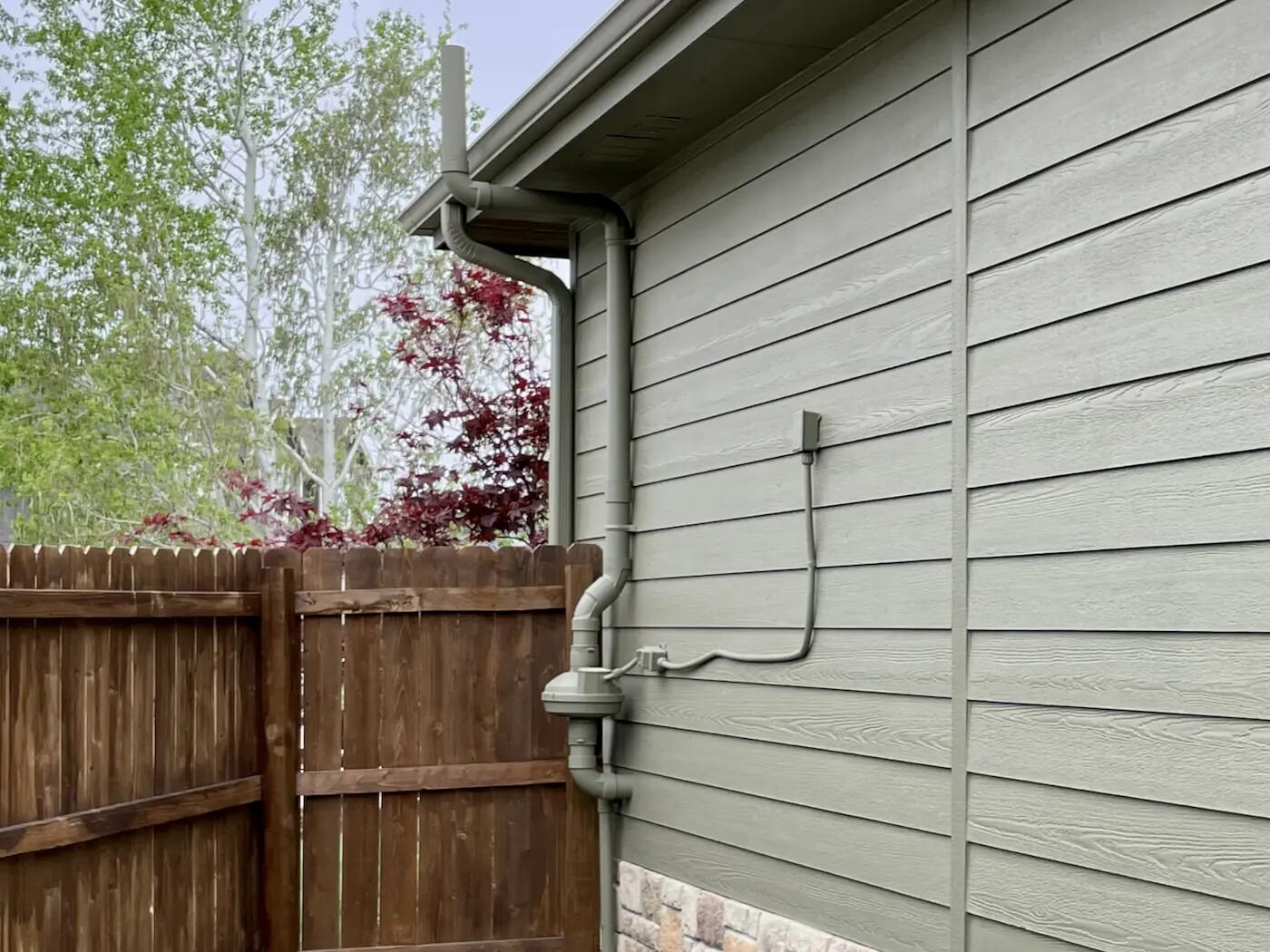
What is radon gas, why is it dangerous, and how can high levels of radon gas be addressed?
What is Radon?
Radon is an invisible gas that is naturally released from water, soil, and rocks. Because it is also odorless, it makes radon detection very difficult without the right equipment. In standard outdoor environments, radon levels are very low. So, generally, it is not considered a threat; however, if there are small holes or cracks in buildings and houses, radon gas can enter the area and build up over time.
Even though you might not be able to see or smell radon gas, continuous exposure can lead to chronic medical problems.
Radon in Omaha (and surrounding areas)
According to information published by the EPA, Omaha is in Zone 1 for radon gas. This means that the area has an above-average radon gas level, measuring above 4 pCi/L.
For this reason, everyone living in Omaha, particularly those buying or selling a house, should get comprehensive radon testing done to see if mitigation is required.
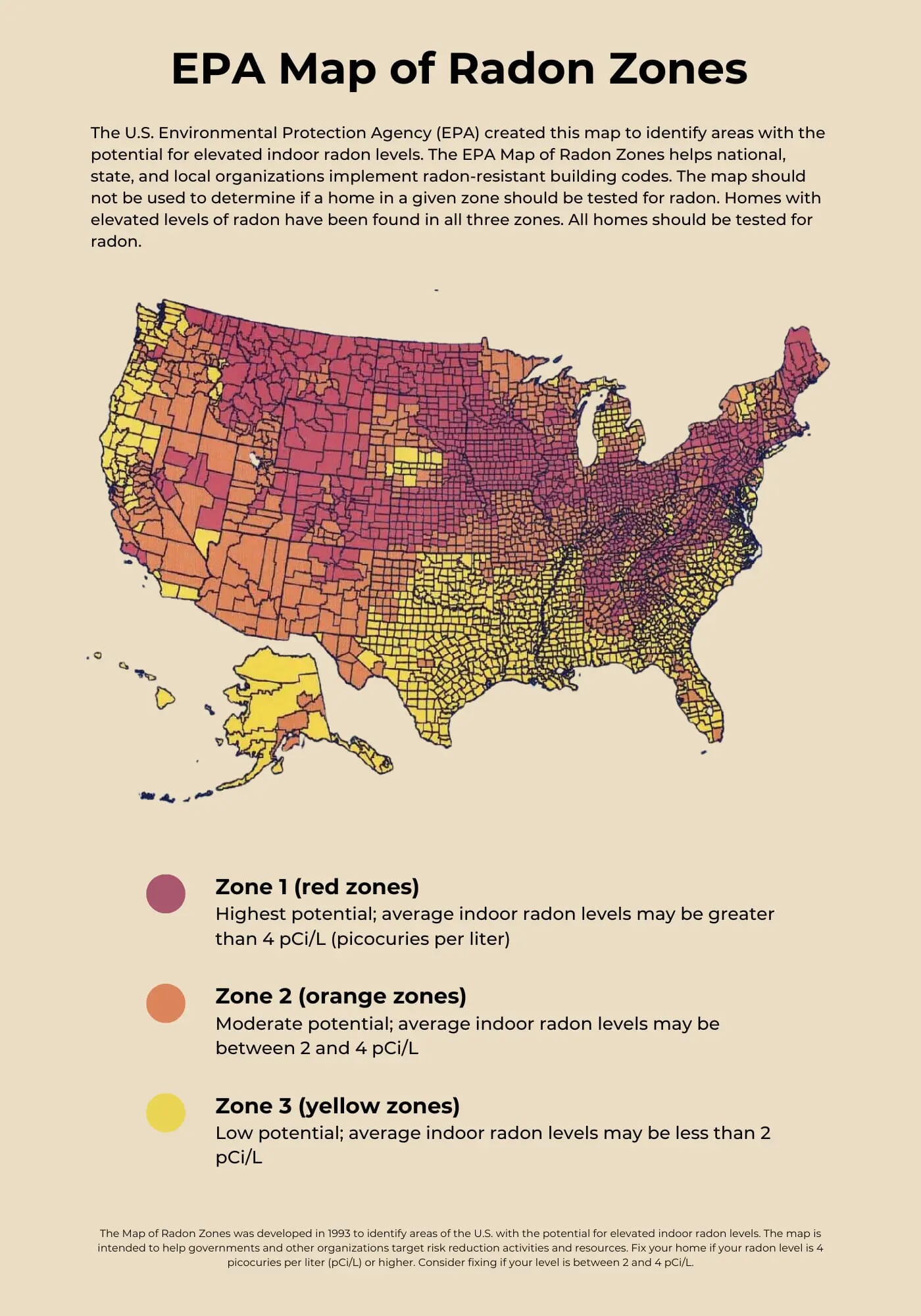
Health Effects of Radon
The health effects of radon can be significant, but its impact might not be felt for many years.
Radon is the second leading cause of lung cancer after cigarette smoking. It is believed that there are over 20,000 lung cancer deaths related to radon each year.
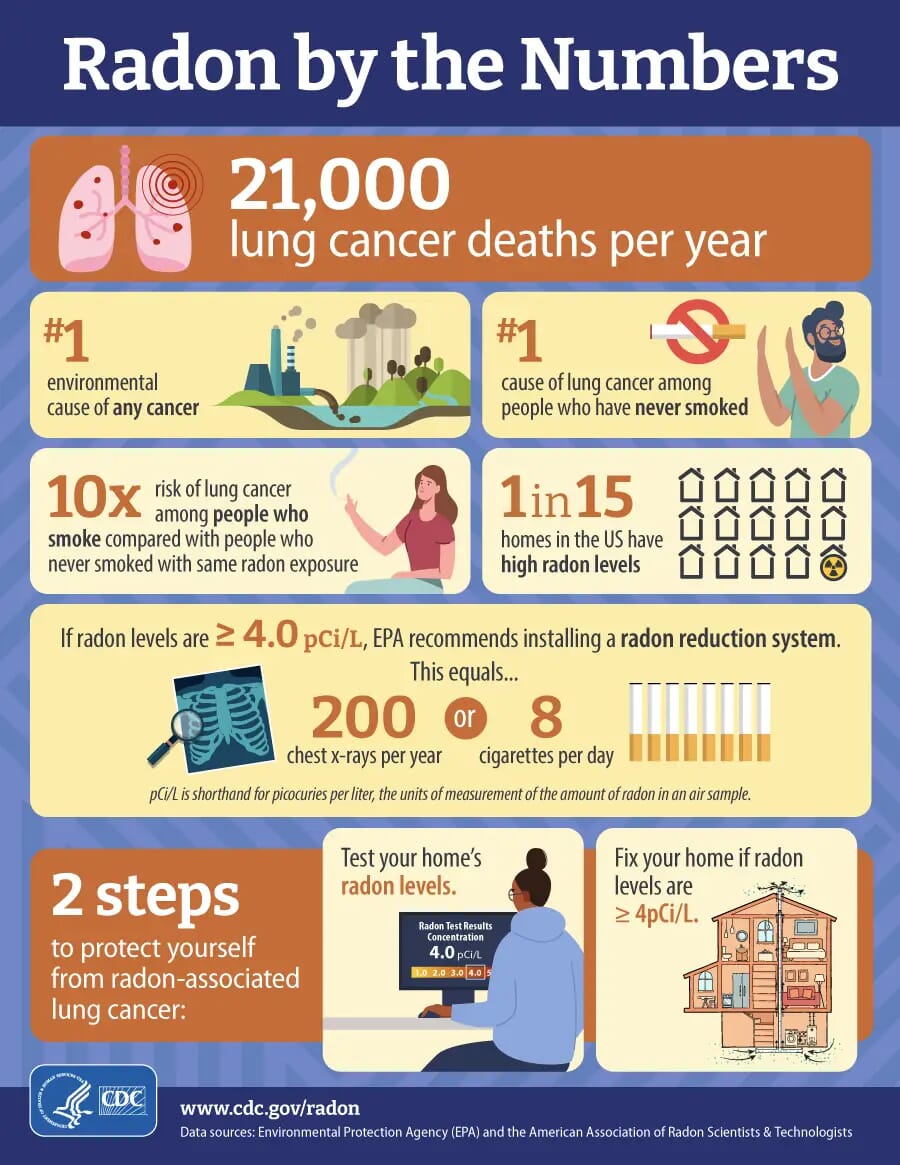
Is There a Safe Level of Radon?
According to the Centers for Disease Control and Prevention (CDC) there is no known safe level of radon exposure. Therefore, you should always try to have the lowest possible level of radon in your home, and you should get testing completed from time to time.
On the other hand, there are levels of radon that are known to be more dangerous than others. For example, if your radon gas level is found to be above 4 pCi/L, then you certainly need to perform radon mitigation to address these elevated levels.
If the level of radon gas in your home is between 2 and 4 pCi/L, you may want to consider taking action to mitigate radon gas, particularly if you or anyone in the home has a history of smoking.
While an ideal level of radon gas would be 0, it occurs in the environment and at very low levels naturally, so if your radon gas levels are already very low, you may not need to take any action; however, you should reach out to a specialist if you have any questions or concerns.
How Radon Enters the Home
Radon is formed as uranium, which is found naturally in soil all over the planet, decays naturally. As uranium decays, radon gas is released, and it comes up through holes in the soil. No matter how sturdy your foundation is, there are still small cracks and crevices through which radon gas can enter.
Once radon gas enters your home, it has a difficult time escaping, so it gets trapped inside. What might start as a relatively low level of radon gas can build up over time, eventually reaching dangerous levels.
This is particularly true in an area such as Omaha, which already has a higher level of radon gas than other locations.
Even though the soil is the main cause of radon gas levels, it is also possible for radon to enter the home through well water or through the materials used to make the house; however, these are less common.
Testing For Radon
To make sure your results are as accurate as possible, you should hire professionals who have the right equipment to measure accurate radon levels in your home.
In Nebraska, radon testing companies need to be licensed. Visit the state government radon page and look for “Licensed Radon Measurement Businesses."
Many home inspectors are licensed to test for radon.
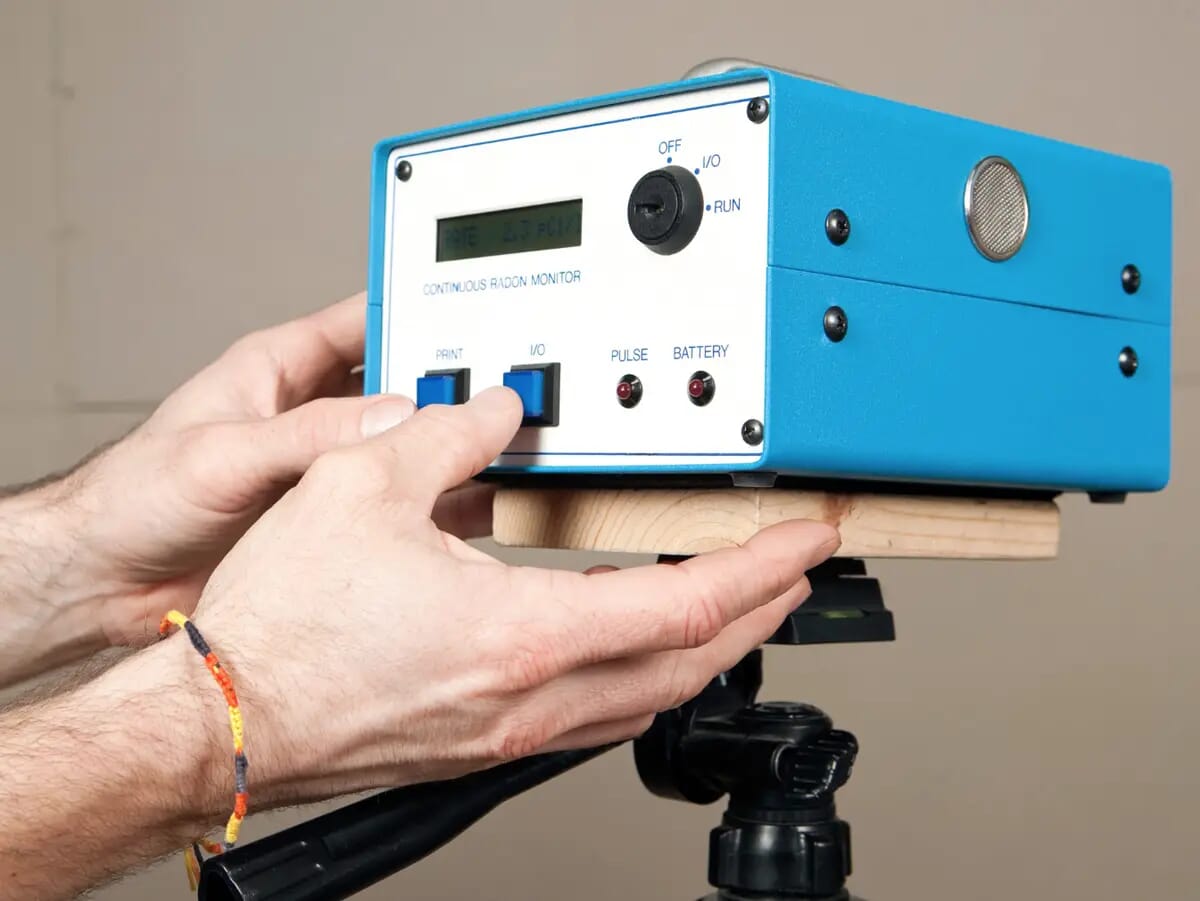
There are several testing methods that could be used. They include:
Electret Ion Detectors
This is a tool that uses a Teflon disc to measure the level of radon in the home. Radon gas is attracted to the Teflon disc, and every time radon strikes the disc, the equipment will develop a stronger charge. At the end of the test, the charge of the Teflon disc will be measured to provide an estimate of the radon gas in the home.
Alpha Track Detectors
This detector uses a layer of film that catches alpha particles. Alpha particles make a mark on the film. As radon gas decays, it releases alpha particles, and these particles can be measured using this device. Then, the alpha particle marks on the film can be measured and used to estimate the radon gas in the home.
Radon Mitigation
There are different types of radon mitigation systems, but the vast majority of systems use a fan to continuously pull air out of the soil and vent it outdoors through a pipe.
That way, any radon gas in the area is sucked out of the ground and shifted away from the home. In addition, any openings or cracks in your foundation will be sealed to limit the flow of radon into your home in the future.
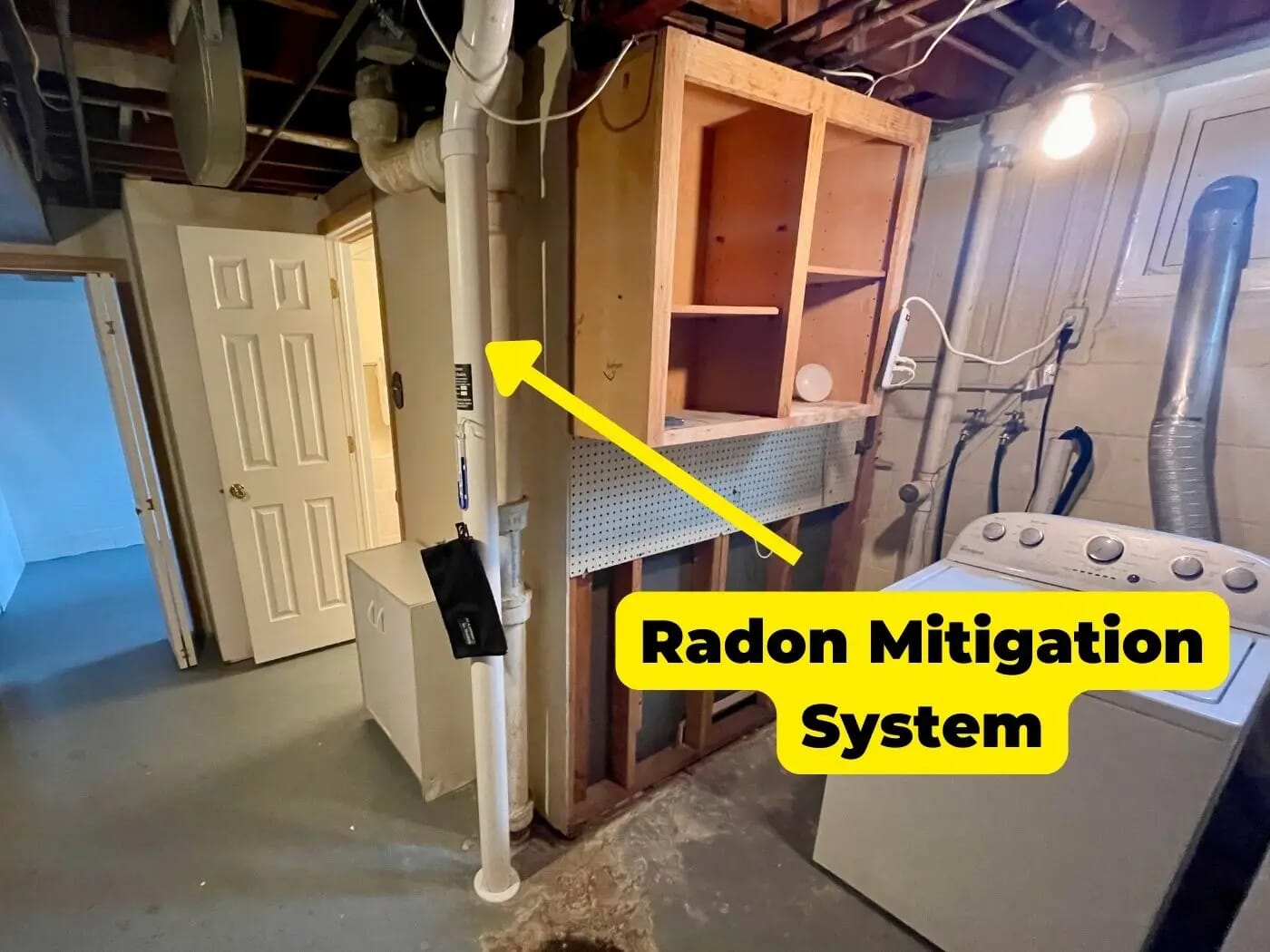
Radon mitigation systems can be deployed throughout multiple areas of your home to ensure nothing is missed or overlooked. Some systems are designed to be deployed underneath the foundation of your home, other systems are funneled through the vents in your house, and there are even some systems designed to work underneath crawl spaces.
A manometer is a U-shaped tube filled with fluid, and it’s typically installed on the vent pipe of the radon mitigation system. It helps ensure the system is functioning properly.
This tube shows the pressure difference in the pipe and whether it is operating effectively.
If the liquid on both sides of the tube is at the same level, then there is an issue. A drop in pressure (or no pressure) may signify a blockage or a problem with the fan.
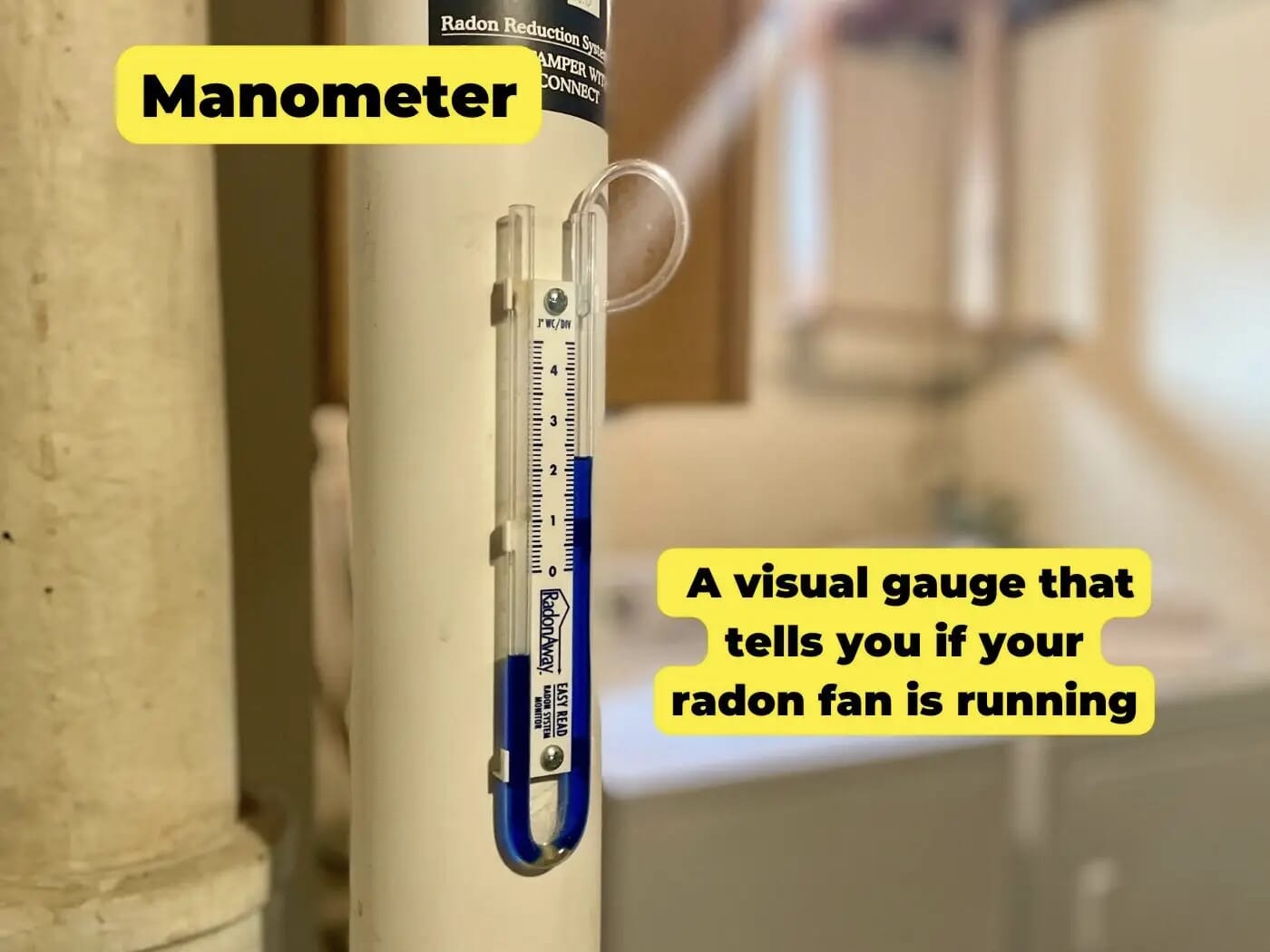
Omaha Radon Mitigation Companies
Just like testing companies, radon mitigation companies need to have a license in the State of Nebraska.
Here are a couple of companies I have personally used and recommend.
How Much Does a Radon Mitigation System Cost
For most homes in the Omaha area, expect to spend about $750 to $1250 for a radon mitigation system.
If you have an existing passive radon system (see below) in your home, the price to install a fan is usually around $450.
There are a few scenarios where the price for radon mitigation can go up dramatically.
Home Design
The design of your home is a huge factor in cost.
If your basement has a crawl space or multiple levels, you can expect to pay more.
The radon company will want to seal the crawlspace and potentially install PVC pipes and fans in multiple locations to effectively mitigate.
If you are getting a really high quote, you can do the work in stages. You can install a basic system first and re-test the levels. If the levels come back low, then you may not need extensive work.
High Radon Levels
Extremely high radon readings can also impact the cost. You may need to install multiple fans in different parts of the home to mitigate radon levels.
Accessories and Upsells
Some radon companies may offer add-ons and accessories. These can start to add up quickly and are not necessary (unless you want them).
You may be offered an outdoor fan cover. It will make the outside look aesthetically pleasing, but it’s not needed and won’t impact the mitigation.
Passive Radon Systems on New Construction Homes
Any home built in the State of Nebraska after September 1, 2019, is required to have a passive radon mitigation system.
A passive radon system has two components.
First, builders are required to seal potential points of entry for radon gas to limit its ability to get into the home.
Next, builders are also required to install a pipe to make it easier for radon in the house to exit the building, preventing it from getting trapped.
This is called a passive system because there is no device (like a fan) actively working to clear radon out of the house; however, a passive system can be converted into an active system relatively easily.
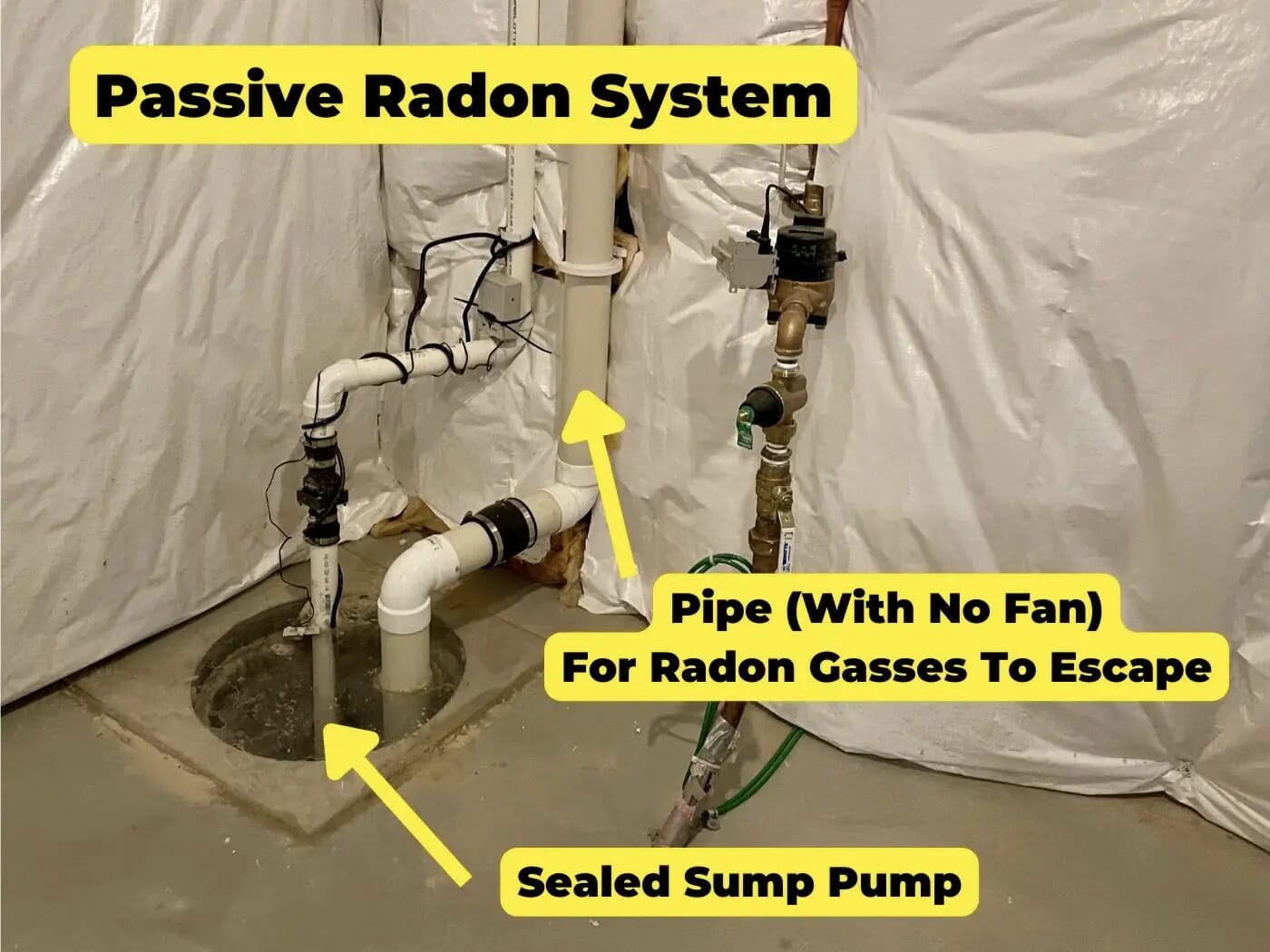
If necessary, a fan can be installed to pull radon out of the home. The cost of adding a fan is usually about $450.
If you have questions about radon gas in your Omaha, Nebraska home, consider reaching out to an expert.
FAQ
What does radon testing cost?
Professional radon testing typically costs about $100 – $125.
How much is a radon mitigation system?
For most homes in the Omaha area, expect to spend about $750 to $1250 for a radon mitigation system.
Does Omaha have high radon levels?
Yes, according to the EPA, Omaha is in a Zone 1 for radon gas. This means that the area has an above-average radon gas level, measuring above 4 pCi/L. Testing and mitigation are encouraged.
Can I paint a radon system?
Yes, you can paint the radon pipe, but painting the fan may void the manufacturer’s warranty.


